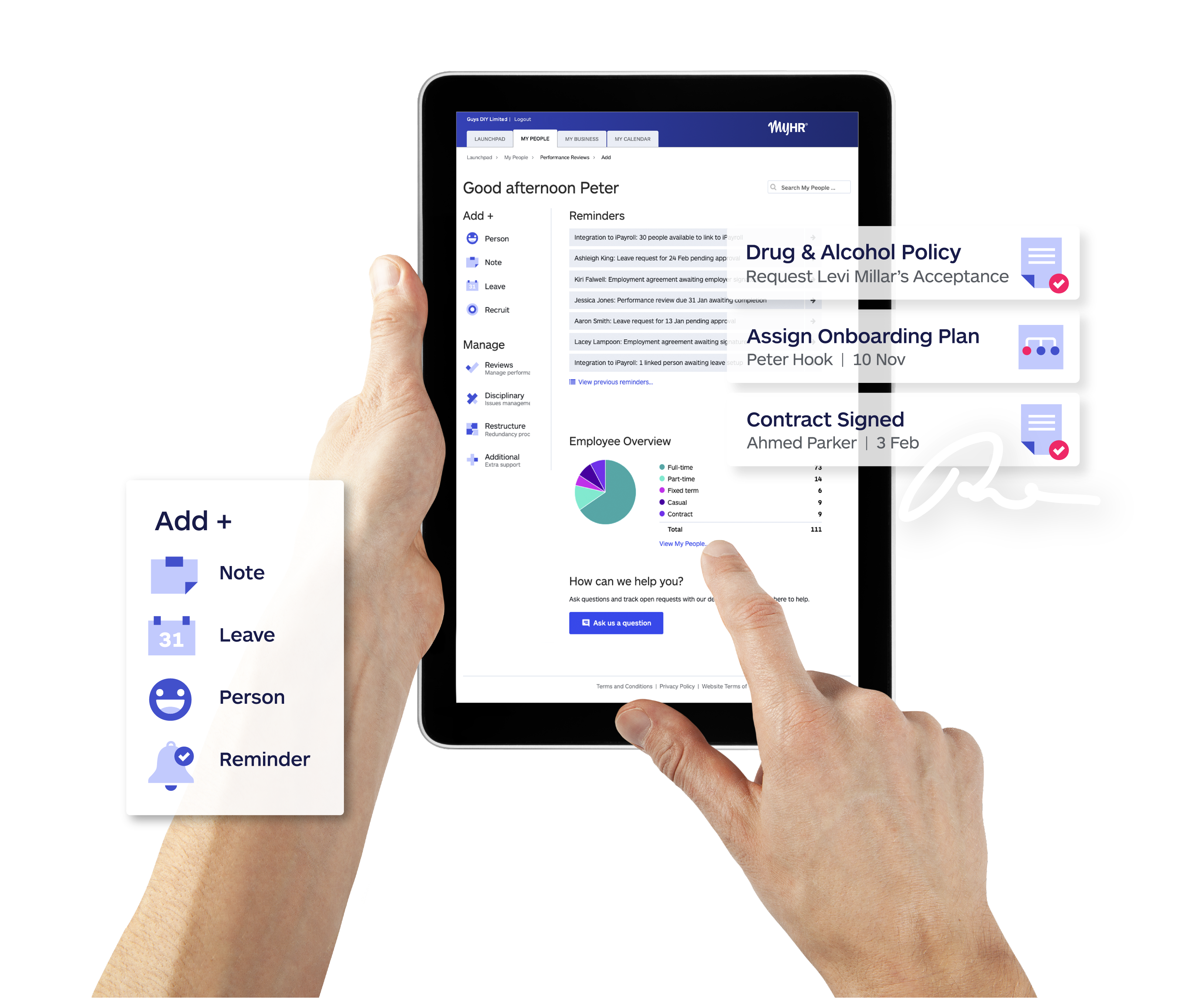One near inevitability in management and business ownership is serious employee misconduct. And although we would rather not have to deal with it at all, it is important to be prepared to manage it when it does occur. That’s why we have developed the guide understanding the difference between minor and serious misconduct, and strategies for moving forward when it does occur.
Myriad factors inside and outside the workplace influence employee conduct and performance, but recent economic pressures can put new strain on employees and employers that managers need to be aware of as well.
- Cost of living pressures: people are under more stress, leading to incidents at work.
- Tight labor market and staff shortages in some industries: employers are doing all they can to keep people, even those they may normally have dismissed, so bad behaviour continues to escalate.
As its name implies, serious misconduct is serious, and both employers and employees need to understand what it is, how it should be handled, and what the potential consequences are.
We’ve created this blog to look at the difference between minor and serious misconduct, what your obligations are, and advice for responding to instances when employee behaviour is majorly out of line with expectations.

Serious employee misconduct can have negative implications for the business and other employees
The difference between minor vs serious misconduct
There are two different levels of misconduct: minor misconduct and serious misconduct. Neither are defined in employment legislation and there is no clear line where misconduct becomes serious. However, case law has established working definitions and the two can be distinguished by the outcome and employer’s obligations in responding.
Minor misconduct is, as the name implies, minor. It typically covers a raft of behaviour, actions or inaction, e.g. failing to follow an employer’s reasonable and lawful instruction, using inappropriate language, repeated lateness, behaving unprofessionally, breaching confidentiality, breaching clauses in the employment agreement, or unsafe behaviour. A single instance of misconduct would not be enough to justify terminating employment unless it was repeated.
Serious misconduct, on the other hand, is serious because it has significant implications or consequences for the business and a single instance has the potential to fundamentally damage or destroy the trust and confidence between an employee and employer. Serious misconduct usually involves the employee doing something deliberately, however, there may be instances when an employee acts so recklessly, that it amounts to serious misconduct.
The best way to differentiate between an instance of minor and serious misconduct is to consider whether, on its own, the trust and confidence in the employment relationship has been so harmed that it would be impractical and unreasonable for it to continue.
Examples of serious misconduct
Serious misconduct includes, but is not limited to:
- Assault (sexual or otherwise)
- Theft
- Harassment of a colleague or customer
- Intoxication or use of illegal drugs at work
- Repeated failure to follow a reasonable instruction
- Deliberate destruction of company property
- Worksafe breaches
- Actions that seriously damage the business’ reputation
- A serious breach of company policy or procedure
Employer’s legal responsibilities for managing misconduct
Employers are obliged to take allegations of misconduct seriously. However, in all circumstances, your response to any instance of misconduct must be fair and reasonable.
- You must have reasonable grounds (i.e. strong reasons for believing the person has behaved this badly)
- You must conduct a full and fair investigation, without predetermining what the employee may or may not have done
- You must follow a fair process and allow the employee an opportunity to respond to the allegations
- Only once you’re sure the employee has committed an act of serious misconduct can you dismiss the employee “for cause” - without notice or the payment of severance in lieu of notice
Tips for mitigating serious misconduct in the workplace
Have clearly defined policies and expectations
We don’t recommend having a company policy that sets out how misconduct will be dealt with, as this can be too inflexible and trip you up when managing disciplinary issues (if you don’t follow your policy to the letter).
What we do recommend, however, is having clear policies relating to key topics such as Bullying & Harassment, Health & Safety, Privacy, Use of Company Property etc. These will clearly outline what you expect of your people as well as the consequences if they don’t meet those expectations.
Keep the policies up-to-date and make sure all employees are aware of them and can access them easily. Everyone in the business needs to be on the same page.
Include a Termination for Cause clause in the employment agreement
While you are not required to have termination clauses in your employment agreement we recommend having a clause that outlines what happens if the employee is involved in an incident of serious misconduct. Having the clause will make your expectations clear and the decision for a summary dismissal more reasonable, so long as you always follow a fair process in reaching that decision.
Don’t assume you know what happened
It’s essential to be objective and approach any allegations of misconduct with an open mind to find out what happened. Even if the facts of the case appear obvious, you must still investigate fairly, consult with the employee, and consider their response in making a decision. You will be surprised at how often the actual situation is different than it first appeared
If you terminate the employment relationship without undergoing a fair and reasonable process, the employee will have a very strong case for filing a complaint with the province's Employment Standards branch or engaging a lawyer. These options can lead to costly settlements or fines.
Follow a fair process
It can be difficult to distinguish between misconduct and serious misconduct; however having sound policies and following robust processes can sort it out and ensure you reach a fair and justifiable decision.
Don’t be unfair, too hurried, or too harsh. You can’t fire an employee for a minor breach of workplace rules or company policy. You must investigate the incident and then raise your concerns with the person. They may well dispute the allegations. Natural justice and your good faith obligations require giving employees a reasonable opportunity to present their side of the story
You also need to genuinely consider their explanation in your decision and weigh up whether the act or conduct has caused a loss in trust and confidence in the employee and whether there are possible and practical alternatives to dismissal. Remember, the process by which you manage and analyse the concerns or allegations is as important as the concerns themselves.
Get good advice
If you believe an employee has committed serious misconduct and you may have to terminate their employment, get expert advice to ensure the process you follow is fair and you reach the right conclusion.The MyHR advisory team has advised businesses across Canada on hundreds of serious misconduct cases. If you’re dealing with a serious misconduct scenario in your workplace, get in touch. We would be happy to help ensure you manage the situation fairly and compliantly.

